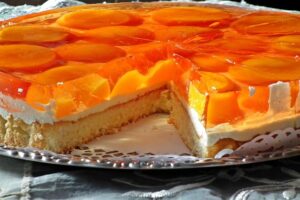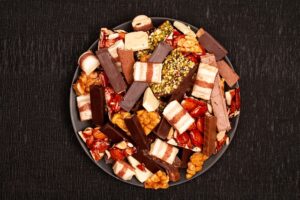A Journey Through Time: Party Treats from Past to Present
Party treats have evolved dramatically throughout history, reflecting societal advancements in cuisi…….
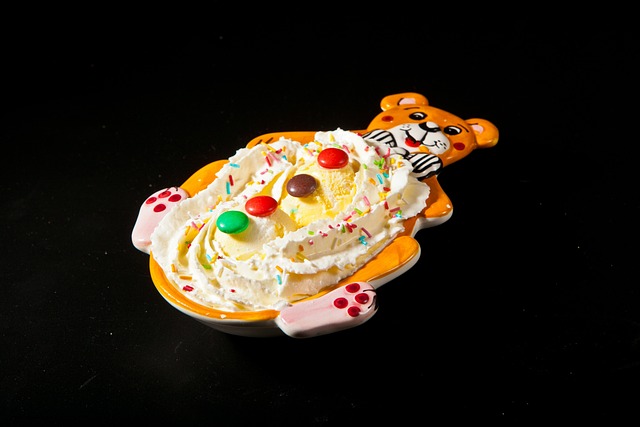
Party treats have evolved dramatically throughout history, reflecting societal advancements in cuisine and culture. From ancient feasts to modern kids' birthday parties, desserts like Kids Birthday Cookies have transformed from simple symbols of abundance to elaborate, personalized creations. The introduction of sugar, baking techniques, and global influences has enriched these celebrations, making Kids Birthday Cookies a timeless part of childhood festivities that continues to delight young palates worldwide.
Discover the delightful evolution of party treats, from ancient celebrations to modern festivities. Explore how birthday traditions and their dessert companions have transformed over time, with a special focus on kids’ love for cookies. Uncover iconic snacks from around the globe and the art of baking that has shifted from home kitchens to commercial operations. Delve into the rich history of party treats, including the role of kids’ birthday cookies, that continue to make our gatherings sweeter.
- A Brief History of Party Treats: From Ancient Celebrations to Modern Days
- The Evolution of Birthday Traditions and Their Dessert Companions
- Kids' Love for Cookies: A Historical Perspective
- Iconic Party Snacks Through the Years
- Cultural Influences on Party Treats Around the Globe
- The Art of Baking: From Home Kitchens to Commercial Operations
A Brief History of Party Treats: From Ancient Celebrations to Modern Days
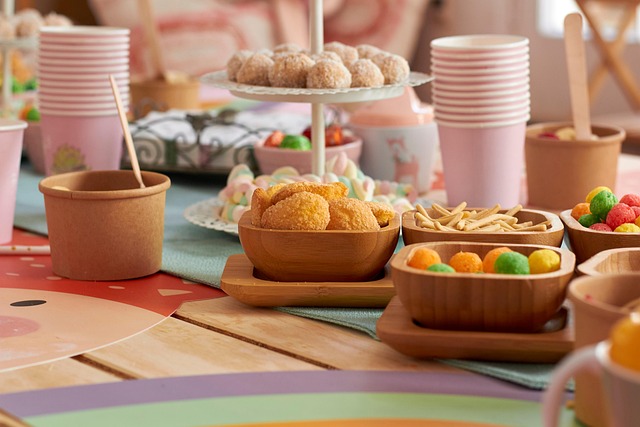
Party treats have evolved significantly over centuries, reflecting societal changes in cuisine, culture, and celebrations. In ancient times, feasts were common across various civilizations, with food playing a central role in marking significant events and honoring deities. Offerings of bread, fruits, and nuts were typical, often presented as symbolic gestures of abundance and prosperity. As societies developed, so did the complexity of these treats; for instance, the Roman Empire renowned its sweet pastries and elaborate desserts.
The concept of party treats as we know them today began to take shape during the medieval period in Europe, where sweets became more accessible due to advancements in baking techniques. The introduction of sugar cane from Asia significantly impacted culinary practices, leading to the creation of diverse candies and baked goods. This trend continued into the Renaissance era, with wealthy families hosting extravagant gatherings that featured an array of exquisite treats, including kid’s birthday cookies—a modern variant of ancient offerings, now tailored for children’s parties.
The Evolution of Birthday Traditions and Their Dessert Companions

The celebration of birthdays has evolved over centuries, transforming from simple gatherings to grand events. One consistent element across time is the desire to treat our loved ones with something special, and this often comes in the form of dessert. The tradition of presenting birthday treats, especially kids birthday cookies, has a rich history that reflects cultural diversity and changing tastes.
Historically, birthdays were marked with simple offerings like fruit, bread, or even candles made from animal wax. As societies progressed, so did birthday celebrations. The introduction of sugar and advanced baking techniques in the medieval period led to the creation of more intricate desserts, including cookies, which became popular as birthday treats. These sweet offerings symbolized joy, prosperity, and good luck, making them an integral part of birthday festivities. Over time, with globalization, various cultures began incorporating their traditional sweets into birthday celebrations, creating a diverse range of dessert companions for special occasions.
Kids' Love for Cookies: A Historical Perspective
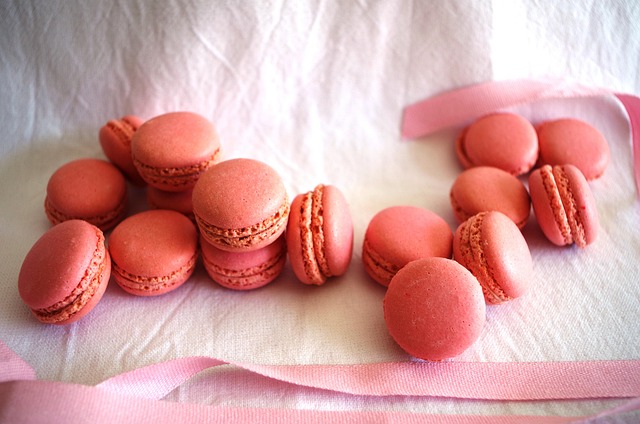
Kids have always had a special affinity for cookies, especially when it comes to birthdays and celebrations. This love for sweet treats dates back centuries, with evidence of children enjoying what we now recognize as classic cookie varieties in various historical records. From the simple sugar cookies of medieval Europe to the more elaborate creations of Victorian England, kids have been indulging in these delectable morsels for ages.
In the United States, the tradition of Kids Birthday Cookies has deep roots. Birthdays were often marked by homemade treats, with cookies being a favorite choice due to their versatility and ease of preparation. Over time, these cookies evolved from simple ingredients like flour, sugar, and butter to include more complex flavors and shapes, reflecting changing culinary trends and cultural influences. Today, Kids Birthday Cookies remain a quintessential part of childhood celebrations, continuing the sweet tradition that has captivated young palates for generations.
Iconic Party Snacks Through the Years

Through the years, party snacks have evolved from simple treats to iconic symbols of celebration. In the past, kids’ birthday parties often featured homemade cookies and cupcakes, with decorations that reflected the child’s interests – whether it was a simple rainbow-colored icing or a more elaborate design. These treats were not just about taste; they became mementos of special occasions, capturing memories for years to come.
As time progressed, commercial party snacks started gaining popularity. Colorful candy and pre-packaged cookies with catchy brand names took center stage in many celebrations. Today, the trend leans towards personalized and creative treats, such as custom-designed cupcakes, mini cheesecakes, and even themed cookies like Kids Birthday Cookies, which can be tailored to match any party theme or individual preference.
Cultural Influences on Party Treats Around the Globe

The history of party treats is a fascinating journey that reflects cultural diversity and evolution over time. Around the globe, parties have been an integral part of social gatherings, celebrations, and rituals, and the treats associated with them offer a unique glimpse into different cultures. From ancient Roman feasts to modern-day children’s birthday parties, the sweet offerings have changed and adapted, often influenced by local traditions and ingredients.
In many Western countries, cookies have long been a staple at kids’ birthday gatherings, symbolizing joy and friendship. These treats come in various shapes and sizes, often decorated with vibrant colors and intricate designs. The trend for personalized and artisan cookies has grown, reflecting a desire to make each party unique. Conversely, other cultures have their own distinctive contributions; for instance, in Asia, colorful and artistic mochi balls are popular during festivals, while in Mexico, sugar skulls and piñata treats add a vibrant twist to celebrations, blending tradition and fun.
The Art of Baking: From Home Kitchens to Commercial Operations

The art of baking has evolved dramatically over time, transforming from humble home kitchens to sophisticated commercial operations. In the past, baking was often a domestic activity, with families preparing treats for special occasions like kids’ birthday cookies, using recipes passed down through generations. These homemade delights were not just about taste; they represented love and care, with each ingredient carefully chosen and every step meticulously executed.
As society progressed, the demand for baked goods grew, leading to the birth of commercial bakeries. These establishments took baking to a new level, employing specialized techniques and equipment to mass-produce treats like Kids Birthday Cookies. They introduced new flavors, textures, and designs, catering to diverse tastes and occasions. The shift from home kitchens to commercial operations not only increased accessibility but also elevated the art of baking, making it a celebrated and integral part of modern celebrations.

